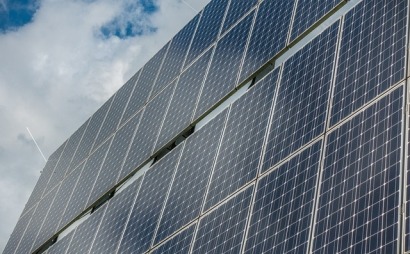
Producing solar panels results in toxic byproducts. For solar to maintain installation momentum, the sector has to find a way to eliminate harmful materials before its potential is tarnished. Industries that ignore the adverse side effects of solar panel creation diminish humanity’s efforts to heal the planet.
Toxins are released when the silicon necessary to make solar panels is mined. Mining produces countless pollutants, and noticing this is critical for understanding the whole picture. The mined product needs refinement, and furnaces reshaping these minerals create waste and harm the air, affecting workers who inhale these toxins.
Solar panels create toxins due to a lack of awareness on the subject and failure to address concerns. Acknowledging the shortcomings paves the way for industrial solar panel development. It also keeps educating people on how sustainable progress realistically unfolds and in what time frames. Seeing populations and technology grow from these learning opportunities is essential for the future’s eco-friendly expectations.
Professionals and customers must discuss solar panels’ flaws or the inadequacies will never be declared significant enough to address.
Fossil fuels powering these refineries have a medley of toxins that impact every facet of the environment, from the water to the air. The metallurgical process to make solar panel-friendly silicon creates carbon dioxide and sulfur dioxide, among other harmful gases. Treating the panels during construction creates tetrachloride and releases acids in waterways.
Other byproducts of the assembly process, like arsenic, hydrofluoric acid and phosphoryl chloride, end up in landfills because recycling infrastructure is still inadequate and expensive. They’re necessary for solar panels to achieve the photovoltaic effect, but are there less damaging alternatives? If so, why aren’t scientists prioritizing them?
Manufacturers don’t make all solar panels the same way. Monocrystalline and polycrystalline panels dominate the market, but other versions are making headway and decreasing reliance on these toxic chemicals and the likelihood of them leaching into the environment.
Thin-film panels use fewer resources because of their structure, and organic solar is a rising niche. All these developments will inevitably encounter waste issues in their own right, but any reduction in toxicity in the process is a step in the right direction.
Accountability and standardization are the best ways to remove toxic materials from solar panels. Miners aren’t held to the same standards as engineers. However, every step of the solar supply chain could release harmful toxins into the environment through chemical reactivity, e-waste disposal or fossil fuel reliance.
Regulatory bodies could increase policing by instilling compliances through the supply chain to realign priorities.
It’s cheaper to throw solar panel waste into landfills, releasing the chemicals into the soil that come with e-waste. However, if the government imposed laws with repercussions, companies would feel more inclined to invest in recycling infrastructure or reevaluate their assembly process. Positive buy-in could eventually increase the 2% of the world’s energy attributed to solar power.
Why would a manufacturer change a blueprint that sells well even if it produces a lot of waste? Governmental fines and destroyed reputations are big motivators.
Additionally, everyone in the chain should have the same standard of environmental loyalty, including:
Finding alternatives for toxic materials
Disposing of inevitable toxic byproducts without harming the environment
Meeting recycling metrics
Making net-zero or carbon-neutrality promises
Reporting consistently to third-party audits
Toxic materials leak from solar panels from beginning to end. The mining process has issues, and disposal is another beast. Every step must be upheld to the same sustainability standards, reducing the number of chemicals harming wildlife.

